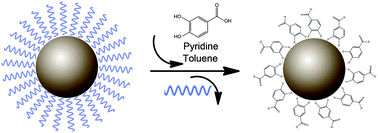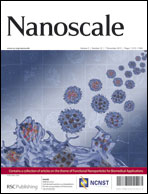Developing Fe3O4 nanoparticles into an efficient multimodality imaging and therapeutic probe
Abstract
A rapid ligand-exchange method was developed to transfer high quality hydrophobic magnetite nanocrystals into water-soluble NPs by using protocatechuic acid as a ligand via homogenous reaction. After ligand exchange, the magnetite nanocrystals not only exhibited outstanding stability in water, but also maintained high crystallinity and saturation magnetization. Cell viability experiments demonstrated good biocompatibility of the NPs. For 12 nm magnetite nanoparticles (NPs), the small hydrodynamic size of 14 nm enabled a high T1 relaxivity of 17.8 mM−1 s−1 while high saturation magnetization of 77.8 emu g−1 enabled the NPs to exhibit a high T2 relaxivity of 220 mM−1 s−1 in MRI phantom experiments. In vivo MR imaging experiments further confirmed that the NPs were eminent T1 and T2 contrast agents. Moreover, the high quality NPs can be used as excellent magnetic heating agents under an alternating magnetic field. With all those features, including multimodality imaging and magnetic hyperthermia, the NPs can be used as single compound multifunctional agents for various biomedical applications, especially for cancer diagnosis and therapy.


 Please wait while we load your content...
Please wait while we load your content...